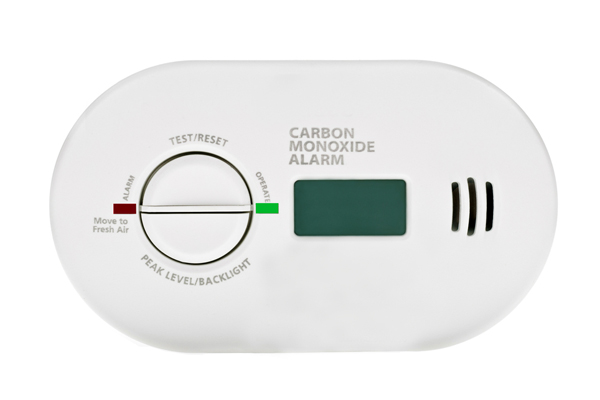Contents
Ensuring the comfort and safety of your home, especially in the cold winter months, is undoubtedly a top concern. This involves having a heating system that is not only robust but also in peak condition. Heating systems, despite their sturdy design, are not immune to issues. One critical aspect to consider is that heating systems operate by burning fuel, which naturally leads to carbon monoxide (CO) production. Awareness of the potential hazards associated with carbon monoxide is crucial. Equally important is ensuring that your carbon monoxide detector functions correctly whenever you use heating appliances in your home.
Carbon monoxide, a gas that is both colorless and odorless, poses a significant risk to both humans and animals. Extended exposure to this gas can even be fatal. However, you can take several proactive measures to protect yourself, your family, and your pets from the dangers of this harmful gas.
Understanding Carbon Monoxide & Identifying Its Risks
Carbon monoxide is a byproduct of the heating process. Its invisibility and lack of scent make it undetectable without assistance, as it cannot be seen or smelled. If your home relies on sources like propane, natural gas, heating oil, charcoal, or wood for heating, installing a carbon monoxide detector is essential for safety.
A venting system is a crucial component in homes with fuel-burning heaters and appliances. It plays a pivotal role in preventing carbon monoxide poisoning by ensuring the safe release of CO outside, thereby protecting the inhabitants from inhaling it. It is imperative that all heating systems and fuel-using appliances are not only properly installed but also regularly maintained. When these systems are in optimal condition, the likelihood of a CO leak is greatly reduced. In the event of any malfunction, a carbon monoxide detector serves as an early warning system, allowing homeowners to take swift and effective measures to address the issue.
Initiating CO Safety Measures – The Carbon Monoxide Detector

To create a carbon monoxide-safe home, the foremost step is to install a premium quality carbon monoxide detector and alarm. This battery-operated device must be situated close to any appliance emitting carbon monoxide. Regular testing and battery replacement are crucial for its effectiveness. Ideally, the batteries should be changed and the device tested before the onset of the colder seasons. During the carbon monoxide detector installation, it’s important to thoroughly read and adhere to the manufacturer’s manual to ensure correct testing, installation, and maintenance procedures are followed.
Key Reasons for Indoor Carbon Monoxide Accumulation
Issues with your heating system’s ventilation can lead to carbon monoxide accumulation indoors. Additionally, carbon monoxide can seep into your living space through a heating unit that is damaged or deteriorating. To mitigate this risk, it’s vital to complement your carbon monoxide alarms with annual inspections and maintenance of your heating system.
Scheduling your annual HVAC tune-up before the heating season commences is an effective strategy to safeguard your family against carbon monoxide leaks. Obstructions in the flue or vent, or a backdraft near your heater, can significantly increase the risk of CO exposure in your home. Contact a reliable local HVAC company for a thorough inspection and necessary repairs. Arranging this service before the onset of the heating season helps ensure your system is fully operational and safe when you need it most.
Recognizing Other Indicators of Carbon Monoxide Leaks or Build-up
While carbon monoxide alarms are essential for detecting carbon monoxide, there are other signs to watch for. Since carbon monoxide is a byproduct of fuel combustion, the appearance of exhaust can vary based on the fuel used. For instance, an oil-based heating system may produce smoke and soot as indicators of carbon monoxide presence. An increase in soot from an oil-burning system is a clear signal to contact a professional HVAC service immediately. In the case of gas systems, a yellow or orange flame, or even intermittent pops of these colors, is a telltale sign of combustion issues and possible CO build-up.
Grading the Severity of Carbon Monoxide Exposure Symptoms
Exposure to carbon monoxide, in any amount, is toxic to both humans and animals. The concentration of carbon monoxide in the environment and the duration of exposure directly influence the severity and breadth of the symptoms experienced.
Mild symptoms of carbon monoxide exposure often manifest as headaches, nausea, dizziness, and fatigue. When the exposure is more significant, moderate symptoms can include severe headaches, confusion, disorientation, and drowsiness. In cases of severe carbon monoxide poisoning, both humans and animals may suffer from heart failure, convulsions, fainting, and, in extreme situations, it can be fatal.
Immediate Actions for Suspected Carbon Monoxide Exposure

If you suspect carbon monoxide exposure affecting any family member, immediately turn off all appliances that burn fuel. Open all windows and doors to let fresh air circulate. Once this is done, promptly evacuate everyone to the outdoors. Seek medical attention right away if you experience symptoms of carbon monoxide poisoning. These steps are vital when symptoms are present and whenever your carbon monoxide detector sounds an alarm.
Always take your carbon monoxide alarm alerts seriously, and never dismiss them as false alarms. It is far safer to err on the side of caution in such situations.
Conclusion
The threat of carbon monoxide poisoning is a critical concern for any household using fuel-burning appliances. To combat this risk, the implementation of preventive measures is essential. A key defense is maintaining a fully functional carbon monoxide alarm. Additionally, conducting annual tune-ups of your heating system is an effective strategy.
A carbon monoxide alarm is critical for alerting you to its presence in your home since carbon monoxide is both odorless and colorless. However, the most effective preventative measure is to have your heating unit professionally inspected. It’s advisable to schedule annual maintenance for your heating system well in advance of the winter season, ensuring optimal operation and safety.
Contact Taylor Energy for Comprehensive HVAC Services
Taylor Energy is your go-to source for exceptional heating and cooling services in Northern Connecticut. Our team consists of highly qualified technicians, each professionally certified and equipped with the expertise to deliver top-notch HVAC maintenance, repairs, installations, and replacements. We pride ourselves on the depth of knowledge and experience our technicians bring to every job, ensuring your HVAC system is serviced with precision and care.
Taylor Energy is committed to providing competitively priced heating and cooling services. Our maintenance solutions enhance your comfort, boost energy efficiency, and help lower your cooling expenses. Whether you need a repair or a new HVAC system, our team can guide you to the best solutions per your needs and budget. We stand behind our work with a satisfaction guarantee. For a hassle-free service experience and a complimentary in-home estimate, contact Taylor Energy today. We’re here to address all your HVAC requirements.
You can click here to contact us now or call us at (860) 623-3308 to find out more! Click the link to view our service area.

Related Articles:
